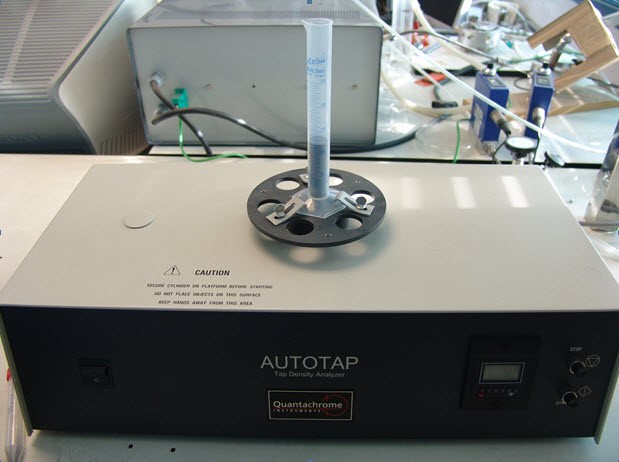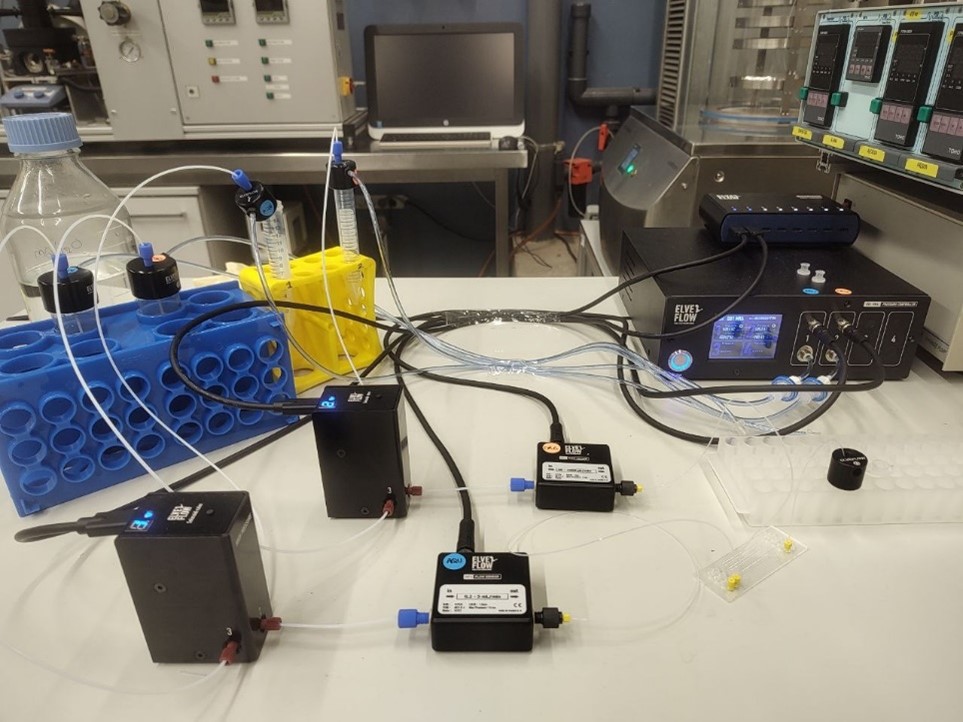U6-E12. Autotap instrument for packed density measurements of powders
 Autotap instrument for packed density measurements of powders.
Autotap instrument for packed density measurements of powders.
Descripción: Bulk density and powder packing tests
Each particle of a solid material has effectively the same true density regardless of size or shape, but more or less geometric space is occupied by the material according to the relative particle-particle cohesion and mechanical interference. That is, the apparent bulk densities of powdered, granular or flaked materials are highly dependent on the manner in which the particles are packed together. Furthermore, handling or vibration of particulate material causes the smaller particles to work their way into the spaces between the larger particles. The geometric space occupied by the powder decreases and its density increases; ultimately no further natural particle packing takes place without the addition of pressure and maximum particle packing is achieved. Under controlled conditions of tapping rate, tap force drop and cylinder diameter, this condition of maximum packing efficiency is highly reproducible. Tap density measurement is formalized in a number of international standards to which Autotap conform.















